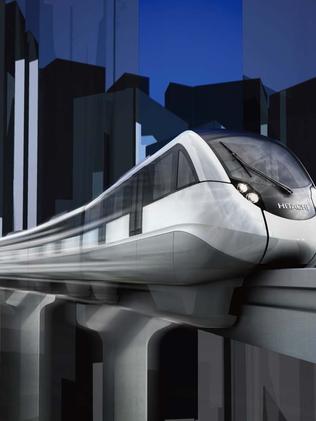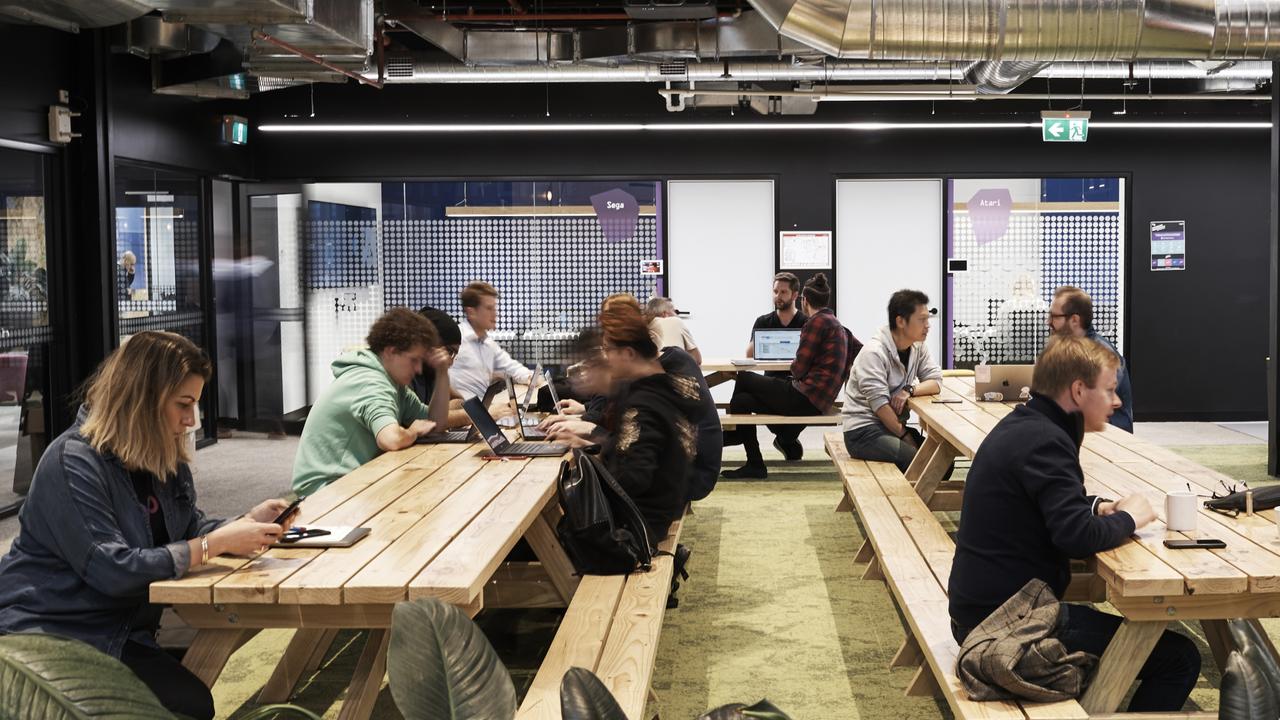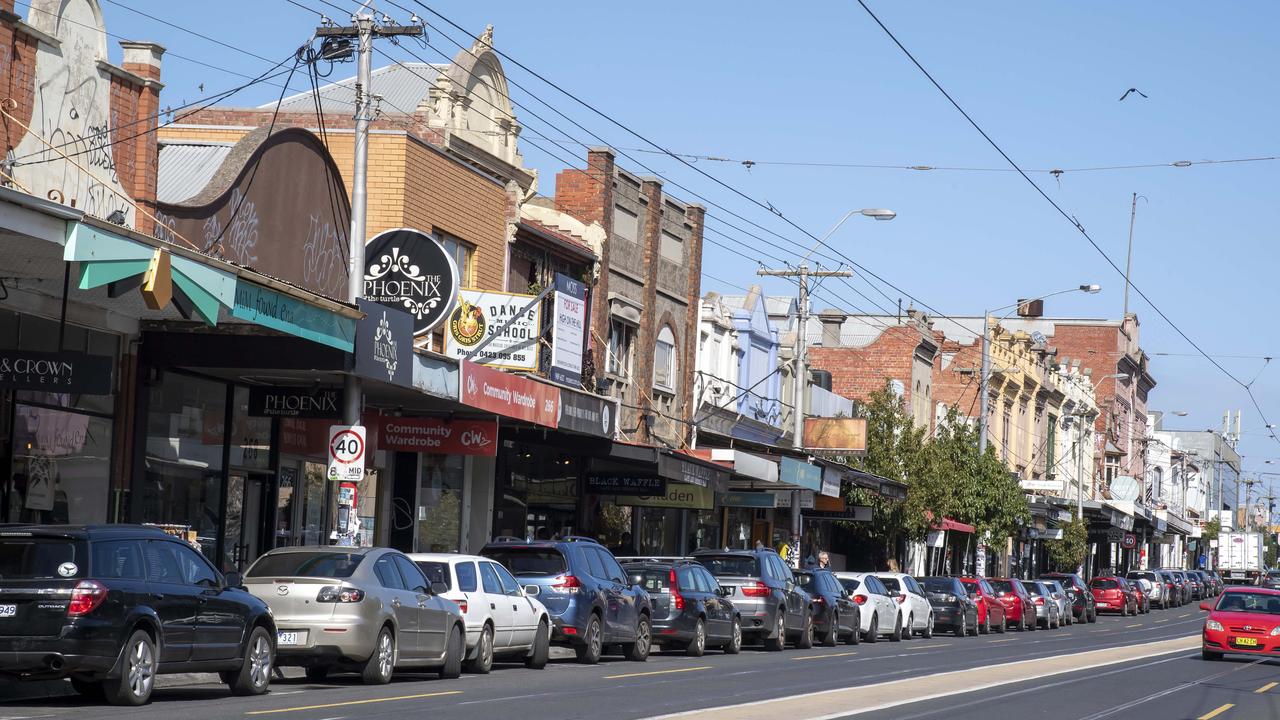Driverless trains a part of expanded airshuttle proposal
A LIGHT rail line connecting the Melbourne CBD to the airport, Doncaster and Monash is the centrepiece of a congestion-busting plan for our future.

DRIVERLESS trains would link Melbourne airport to the city and high-growth suburbs at Doncaster and Monash as part of a radical plan to get the city moving.
Supporters of the SkyLink RapidTransit proposal to service Tullamarine say the technology could also be extended from the CBD to service “public transport desert” suburbs and complement the existing tram and train networks around Sunbury, Ringwood and Dandenong.
The push is revealed as the Herald Sun launches Future Melbourne, a week of special reports into our great city looking at how we can remain the most liveable place in the world.
We reveal how long you will spend behind the wheel commuting to work by 2030 if authorities don’t fix congestion, why road experts believe a user-pays model is best for Melbourne, why our city won’t cope with a projected 7.8 million population and how many of us will be catching trains by 2031.
Peter O’Brien, who heads up the Airshuttle Australia consortium, is behind the $1.5 billion idea for super-fast rail to the airport.
BERNARD SALT: MELBOURNE MORE LIVEABLE, AFFORDABLE THAN SYDNEY
Connecting Doncaster and Monash would bring the total cost up to $5 billion.
Monash is the second-biggest employment centre outside the CBD with more than 85,000 workers and 40,000 students.
It is projected to double to 170,000 workers over the next 30 years.
The 601 service from Huntingdale station to Clayton campus is the busiest bus route in Victoria, with 37,000 people using it weekly.
A new $5 million bus interchange will be built at the station, providing facilities for buses, taxis and bikes, as well as a drop-off area.
Mr O’Brien said Monash was the main growth corridor in Victoria.
“Doncaster is the other big corridor. There are five cities out in the east without rail — and they’ve been trying to get a train line for more than 100 years,” he said. “We can do the airport link without doing Doncaster and Monash but it’s not going to be as effective.
“Most of the travel to the airport is domestic business and holidays, and the people who do that are the middle class.”
Business consultants PwC partner John Marinopoulos said the booming area around Monash University needed proper transport infrastructure.
He said PwC had investigated how the Monash precinct could be connected to the more traditional tram and light-rail network at a potential cost of less than $3 billion.
“One solution is a light rail down Dandenong Rd to Monash University and then to Burwood Highway,” Mr Marinopoulos said.
“This would connect multiple train stations and lines to the Monash precinct, and provide real alternatives to private vehicle travel.
“We need to have a conversation about these kinds of solutions, whether tram, light rail or newer technologies including how they are to be funded.”



Transport For Victoria spokesman Adrian Darwent said Infrastructure Victoria had recommended a new mass transit network (bus and light rail) for the Monash precinct over heavy rail because it was a lower-cost solution that had greater potential to meet the needs of passengers.
“Transport for Victoria is responsible for assessing the long-term needs of the metropolitan transport network, including the need for new connections to locations such as Monash University,” he said.
Infrastructure Victoria released a report last year that said a train to the airport was needed in 15 years, but assumed the solution would be a heavy rail link via the Albion East reservation.
Costing up to $5 billion to build, the trip would take up to 40 minutes — three times the cost and time of the airshuttle.
Airport users are expected to grow to 60 million passengers a year by 2033.
The airshuttle would make the shortest trip between Southern Cross station and the airport about 15 minutes with silent, rubber-tyred trains running every two to four minutes, 24 hours a day.
Every 30 minutes, an 18-minute trip would take in stops at Essendon Fields and Moonee Ponds.
Mr O’Brien said the preferred technique was at grade or in an open trench but an elevated track was needed on some routes such as the Tullamarine Freeway.
A one-way trip to or from the city would cost about $25.

The consortium has investigated an 18-minute alternative route through Maribyrnong and Keilor Park, which is 10 per cent longer and 20 per cent more expensive, but it does facilitate the development of defence land.
“We need to be carrying 12 million people a year on rail to and from the airport in 10 years from now,” Mr O’Brien said. “In other words, about 20 per cent of the 60 million passengers visiting the airport each year, with another 20 per cent on buses.
“Sixty per cent will still use cars, which is 36 million vehicles, so there will be no shortage in airport carparking revenue.
“It’s got to happen now because the interconnectivity needs to be planned in detail, as well as all the studies required by the federal and state governments, and then about four years to build and commission, so it’s not ‘come back in 10 years’, which is the airport’s current line.
“It’s a question of 21st century light-rail technology verses 1914 heavy-rail technology — it’s superior in every regard.”
The trains would be 70 per cent solar-powered/battery, along the lines of the Bologna Airport Train now being built by the Swiss.
To run trains at two-minute intervals, Mr O’Brien said they would need to be automated.
“A computer is also far safer and more reliable. In fact, Hitachi no longer makes standard trains with drivers,” he said. “If you want to run trains every two minutes, you can’t use humans.”
Mr Marinopoulos said Melbourne was one of the largest cities in the world not to connected by rail to its international airport.
“With the type of growth Victoria is looking at, when you start seeing traffic delays going past Mickleham Rd back to Essendon Airport, how soon until it starts going even further back?” he said.
“If we don’t do anything about an airport rail link, we could be looking at up to 60-minute delays getting to the airport by 2030.”
Last month, the state government announced $10 million in funding to examine proposals for the best route for an airport rail link, its cost, and how to deliver it.
MORE FUTURE MELBOURNE


